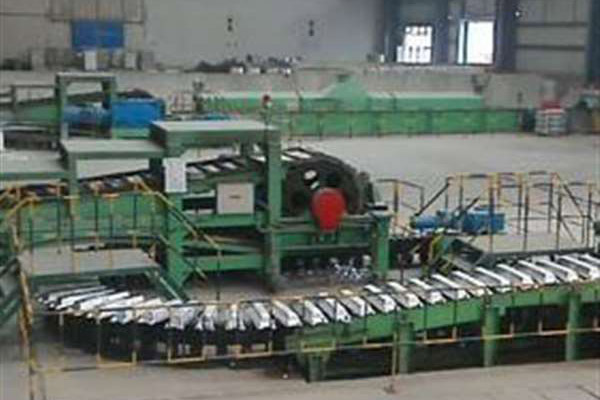Casting Process of Aluminum Ingots
The casting process of aluminum ingots involves injecting molten aluminum into a mold, which is then cooled to form a billet. This process is crucial as it determines the quality of the final product. The casting process transforms liquid aluminum into solid aluminum through crystallization. There are two common casting methods: continuous casting and vertical semi-continuous casting.
Continuous Casting
Continuous casting can be further categorized into two types: mixing furnace casting and external casting. Both methods utilize continuous casting machines. In mixing furnace casting, the process begins by loading aluminum liquid into a mixing furnace. After batching, the aluminum is poured into the furnace, stirred, and refined with flux. The alloy must be clarified for at least 30 minutes before casting. Once clarified, the aluminum is free of impurities and ready for casting. During the casting process, the furnace eye is aligned with the molds on the casting machine. The flow channel connecting the furnace and the casting machine must be short to minimize oxidation and avoid splashing. After the aluminum liquid fills a mold, it moves to the next, continuing until the aluminum has cooled and solidified into an ingot. Water cooling is an essential part of this process, using about 8-10 tons of water per ton of aluminum liquid.
Common defects in continuous casting include porosity, which is caused by high casting temperatures and excessive gas content. Slag inclusion may result from unclean slag or low aluminum liquid temperatures, while issues like corrugation and flash can arise from imprecise operations or machine malfunctions. Cracks can be formed due to incorrect casting temperatures, and component segregation often results from uneven stirring during the casting of alloys.
External casting, on the other hand, involves casting directly from a ladle to the casting machine. This method is typically used when the equipment is not suitable for mixing furnace casting or when the incoming materials are of poor quality. Since no external heat source is used, it is vital to maintain a certain temperature in the ladle to ensure a better appearance of the aluminum ingots.
Vertical Semi-Continuous Casting
Vertical semi-continuous casting is frequently used to produce aluminum wire ingots, plate ingots, and other deformed alloys for profiles. The process begins with the aluminum liquid being poured into a mixing furnace for batching. Various additives, such as Al-B, Al-Ti-B, and 2# refining agents, are added to refine the metal and ensure a fine surface structure. Preheating the mold components is crucial, and lubricating the inner walls of the crystallizer ensures smooth casting.
During the casting procedure, the aluminum liquid flows from the mixing furnace through a distribution plate into the crystallizer, where it begins to crystallize from the bottom and the sides. The chassis of the casting machine descends at a controlled speed, allowing the aluminum liquid to solidify gradually. Continuous water cooling sprays onto the ingot's surface for secondary cooling, ensuring a consistent solidification process.
Common defects in vertical semi-continuous casting include cracks, which often result from high temperatures, fast speeds, or insufficient cooling. Slag inclusions may arise from fluctuations in the liquid and improper slag removal. Cold shuts can be caused by uneven aluminum levels or incorrect temperatures, while pores are typically formed due to high casting temperatures that trap gas inside. A rough surface may occur due to poor lubrication or uneven cooling, leading to imperfections on the finished ingot.
Why Choose Us
With over ten years of experience, we specialize in providing high-quality casting solutions for aluminum ingots. Our advanced testing and quality assurance processes ensure that each product meets industry standards. We offer customized solutions, a one-year warranty, and 24-hour online support. Contact us for reliable, efficient, and tailored aluminum ingot casting services.




